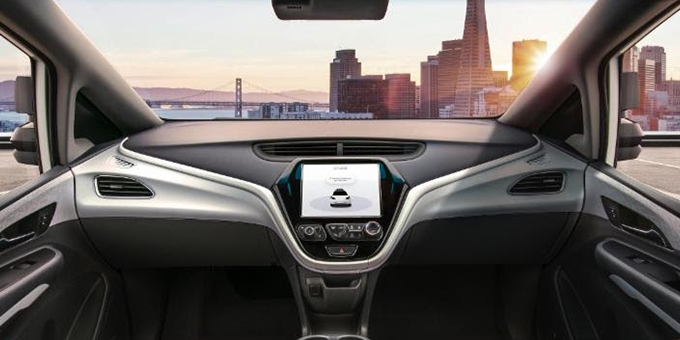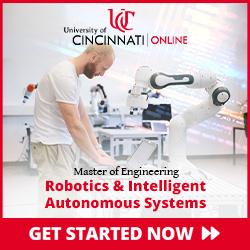High-speed CXP 2.0 is ideal for AV and ADAS (Advanced Driver Assist Systems) connectivity applications. Camera images from multiple sources around the vehicle, along with data from sensors capturing object shape, speed and distance.
 Is CoaXPress the Future of Autonomous Vehicle Camera Safety Systems?
Is CoaXPress the Future of Autonomous Vehicle Camera Safety Systems?

Contributed by | Bitflow Inc.
While the CoaXPress (CXP) standard is intended primarily for machine vision tasks, it is equally well suited for imaging applications in other sectors where extreme high-speed data transmission from a camera to a PC is required.
One of most exciting of these burgeoning sectors, according to CoaXPress frame grabber manufacturer BitFlow, Inc., is autonomous vehicles (AV) or "self-driving" cars. By one account, driverless tech will add $7 trillion to the global economy and save hundreds of thousands of lives in the next few decades. In this modern day goldrush, BitFlow sees tremendous opportunity for CXP cameras, frame grabbers and accessories.
"To provide safe visualization of its surroundings, self-driving car's cameras need to capture thousands of frames per second, both as primary and redundant data sources," said Donal Waide, Director of Sales for BitFlow, Inc. "The current imaging standards for the automotive industry, such as GMSL, GMSL2 and FPD Link, do not answer the growing need for the bandwidth and flexibility that today's technology and safety demands are putting on Autonomous vehicle manufacturers. CoaXPress is emerging as a smarter choice."
Launched less than a decade ago, CoaXPress (CXP) is a point-to-point serial communication standard for the transmission of video data over traditional 75Ω coaxial cables up to 100 meters in length. CXP 1.1 supports speeds up to 6.25Gbps, although the use of multiple cables allows scaling of bandwidth to meet the needs of a specific application. Additionally, CXP supplies power to the camera via PoCXP, plus controls the camera over the same coaxial cable. The next generation of CXP, CoaXPress 2.0, extends data transfer rates to 10 Gbit/s (CXP-10) and 12.5 Gbit/s (CXP-12) per connection.
High-speed CXP 2.0 is ideal for AV and ADAS (Advanced Driver Assist Systems) connectivity applications. Camera images from multiple sources around the vehicle, along with data from sensors capturing object shape, speed and distance, can be fed into a high-performance, centralized AI computer that stitches together a 360-degree 3D view of a car's surroundings. In turn, the computer sends commands to apply the brake, turn, change lanes, or slow down, for example.
Current GMSL2 performance is sufficient for Partial Automation (Level 2) or Conditional Automation (Level 3) where the typical scenario might be driver assistance in parallel parking. Full Automation (Level 5), where the passenger is traveling at highway speeds in real time with other vehicles on the road, will require significantly higher data rates than the GMSL2 interface can offer.
.png)
Courtesy of SAE
CoaXPress compares very favorably to GMSL. Maximum speed for GMSL data transfer is 2.5 Gbit/s with support for camera resolutions up to 1280 x 800 pixels, while CXP 2.0 delivers lightning-fast speeds of 12.5 Gbit/s or 500 percent faster than GMSL. This enables full resolution color images to be captured by CXP-12 megapixel cameras boasting 4096 x 2168 pixels at 93 frames-per-second. Multi-camera systems of varying resolutions, like those needed on self-driving cars, can be precisely synchronized with CXP 2.0 with virtually no latency periods.
Says Waide: "The autonomous vehicle industry has come to a VHS-or-Betamax moment. It can either continue down the path with GMSL and wait for it to catch up with the industry requirements through technological developements over several years, or embrace the much faster, easily integrated and proven CXP standard. At the end of the day, the industry will get what it pays for, something it shouldn't take lightly considering passenger safety is at the very core of whether or not consumers are going to accept the concept of a self-driving car."
Along with being faster, CXP coaxial connectivity is a superior choice for a car's wiring harness. Besides the chassis and engine, wiring harnesses are the heaviest, most expensive component to a self-driving car. CXP's use of low-cost coaxial cable instead of Ethernet cables saves the car manufacturer money, and has the added benefit of taking up roughly 50 percent less space on the harness. Cost savings from coaxial cables can be realized without trading off critical features such as accuracy, range, sampling rates, or overall system complexity.
Market observers see cameras as an inexpensive compliment to LiDAR (Light Detection and Ranging) sensors, the established sensing technology for self-driving cars. LiDAR adds upwards of $10,000 to the price of a car, putting autonomous driving out of reach to most consumers. Unlike LiDAR, less costly cameras can read signs and see colors for safe navigation of roads. Cameras can also be mounted virtually anywhere on the car to cover a greater field of view, whereas LiDAR is typically set-up on the vehicle roof, a strategy that creates blind spots of low objects, especially in the rear of the car. Interference is another potential issue with LiDAR as these systems roll out more broadly. If there are a large number of vehicles all generating laser pulses at the same time on the same road, it could potentially "blind" the vehicles. LiDAR has also been faulted for using an exorbinent amount of power.
Elon Musk, founder and Chief Executive of Tesla Inc., recently called LiDAR "a fool's errand" and that "anyone relying on LiDAR is doomed." Tesla's autopilot system currently uses video cameras and radar technology.
New stereo cameras, which rely on two perspectives rather than one to establish depth, are posed to revolutionize autonomous car safety. These short- and long-range cameras generate steroscopic 3D point clouds to achieve "pseudo-LiDAR" visualizing of surroundings and may one day replace LiDAR altogether in the sensor suite. Machine learning capabilities means a 3D camera equipped car can resolve objects better and react more quickly than human drivers. This technology can also transform other modes of autonomous transportation such as trucks, tractors, ships, shuttle services, forklifts, trains and construction equipment.
"Autonomous vehicles are important opportunities to reduce deaths and injuries on the roads but they must be made affordable before they can be mass adopted," said Waide. "Although CXP camera-based systems cost more than slow GMSL, they are still much less expensive than LiDAR systems and are easier to incorporate since most of the technology is already available. If the auto industry adopts CXP technology, self-driving cars may go from science fiction to commercially available sooner than anyone expects."
About BitFlow
BitFlow has been developing reliable, high-performance Frame Grabbers for use in imaging applications since 1993. BitFlow is the leader in Camera Link frame grabbers, building the fastest frame grabbers in the world, with the highest camera/frame grabber densities, triggering performance, and price. With thousands of boards installed throughout the world, into hundreds of imaging applications, BitFlow is dedicated to using this knowledge and experience to provide customers with the best possible image acquisition and application development solutions. BitFlow, located in Woburn, MA, has distributors and resellers located all over the world including Asia, the Americas, and Europe.
The content & opinions in this article are the author’s and do not necessarily represent the views of RoboticsTomorrow

BitFlow, INC.
BitFlow has been developing industrial frame grabbers and software for the imaging industry since 1993. We specialize in interfacing to cameras with very high data/frame rates; working in environments with complex triggering and I/O requirements; and running in applications where every CPU cycle is precious.
Other Articles
CoaXPress over Fiber
The Axion xB series frame grabbers from BitFlow, Inc.
The Claxon Platform, a Quad CXP-12 PCIe Gen3 Frame Grabber
More about BitFlow, INC.
Comments (0)
This post does not have any comments. Be the first to leave a comment below.
Featured Product

